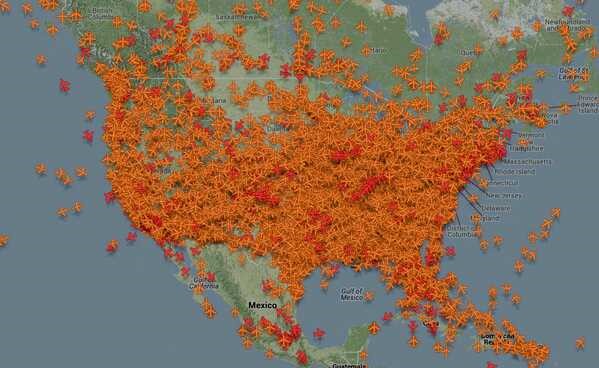Flying high or flying blind in IT?
 by Sue Dunnell
by Sue Dunnell
If there was a map to depict a typical day in IT, it would look like the air traffic the day before Thanksgiving. The normal state of operations for both the airline industry and IT is highly interrupt driven. Change is constant, and being able to anticipate problems, prevent disruption, reroute traffic, and rapidly restore service is not only demanded, but expected.
Although this map looks like chaos, it actually reflects a highly orchestrated system of human and automated systems working to execute tasks in specific sequences. It’s a system that is precise and ordered to mitigate risk, and at the same time be highly flexible and responsive.
Just like IT must be.
IT faces unique challenges today:
- While it is replete with purpose-built tools that do their jobs well, these tools are not set up to work together.
- Data is stored in disparate sources in different formats.
- Automated tools focus on discrete, repeatable processes and only drive incremental productivity.
- Business units operate in silos, with different priorities, access to different sets of data and different constraints.
- Some users circumvent IT and implement their own hardware and software but expect IT to respond to service issues or outages.
- If IT doesn’t have a handle on this environment, cost, risk and project delays are all likely to rise.
As businesses across all industries are increasingly dependent upon software, IT is under pressure to rapidly deliver innovative experiences, new ways of engaging with customers, and at the same time, make sure all existing systems keep running uninterrupted. When system outages or other mishaps do occur, customers rush to social media to shine the spotlight on service problems, website failures and other technology glitches.
And it doesn’t seem like anyone is immune. AeroData’s system issues caused outages that affected several airlines earlier this month; Hubspot’s systems recently went down for two days and important customer data was lost, and MySpace lost 12 years of music uploads, some of which has been recovered but much of which is gone forever.
Managing change in this dynamic environment is difficult. IT needs to have an accurate understanding of their environment, the ability to rapidly respond to business demands and execute change efficiently without causing outages.
Ready to see how TransitionManager can reduce risk, eliminate blind spots and complete migration projects successfully with minimal disruption to operations?
Sign up for an online demo!
